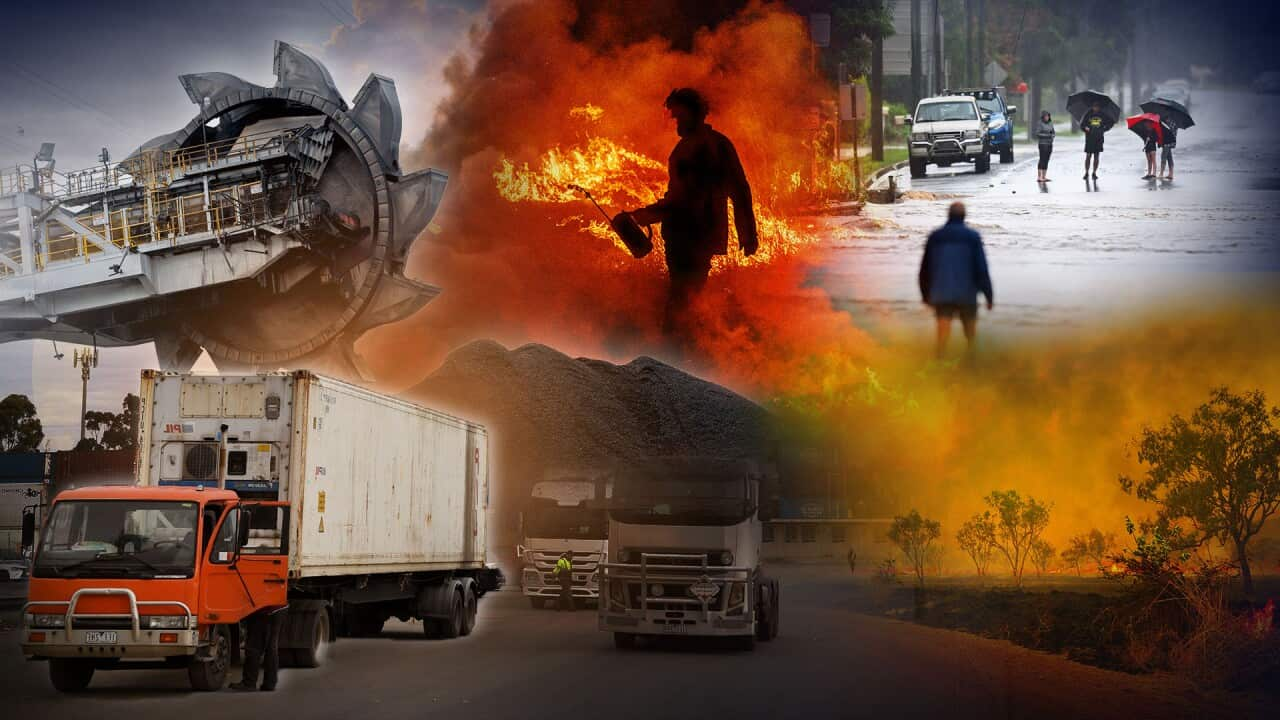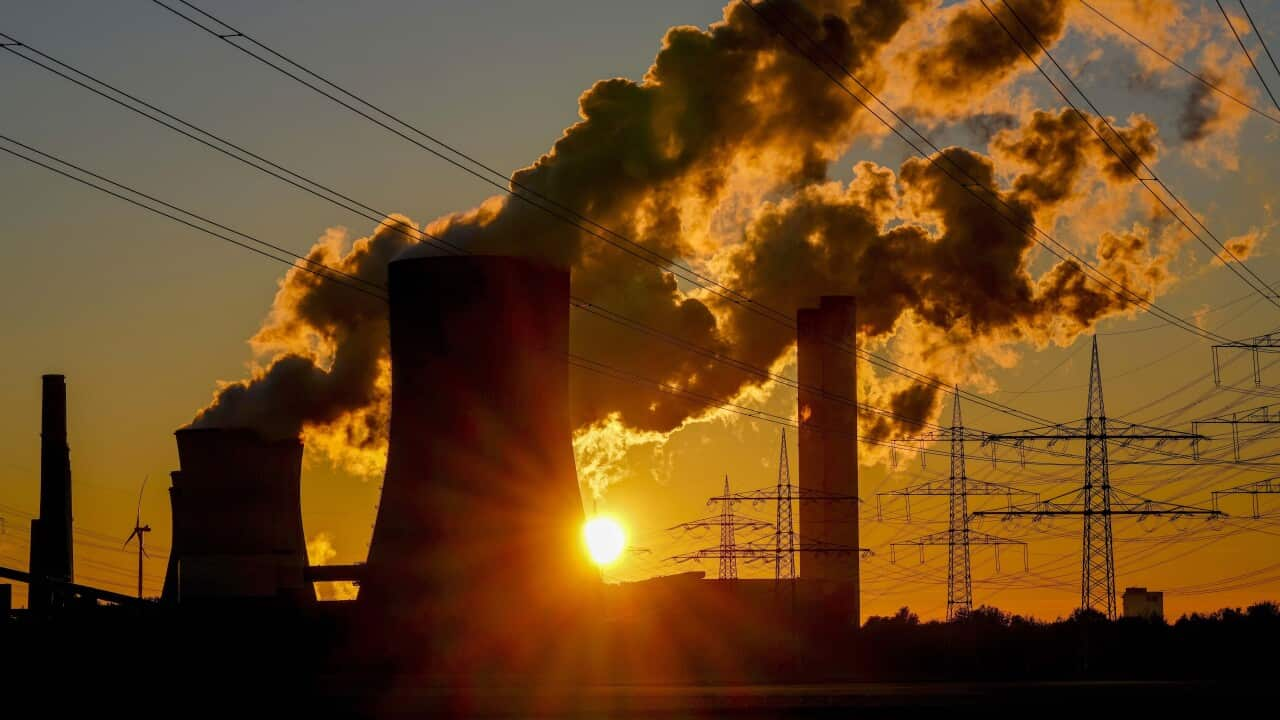Key points
- Scientists say humans have generated 1.3 trillion tonnes of CO2 pollution since the industrial revolution.
- Oxfam says climate change is exacerbating inequality across the world.
Carbon dioxide in the Earth’s atmosphere has hit levels not seen in at least four million years, with scientists warning that the effects of climate change will only worsen in Australia and around the world without swift action to curb emissions.
Figures released by the United States government’s National Oceanic and Atmospheric Administration’s (NOAA) Mauna Loa Atmospheric Baseline Observatory, situated on the slopes of the Mauna Loa volcano in Hawaii, show that CO2 levels in the atmosphere peaked at 421 parts per million in May – 50 per cent higher than before the industrial revolution began in around 1760.
Pre-industrially, CO2 levels were “consistently around 280 parts per million for almost 6,000 years of human civilisation,” NOAA officials said in a statement on Friday.
Since then humans have generated more than 1.3 trillion tonnes of CO2 pollution, “much of which will continue to warm the atmosphere for thousands of years”, they said.

Source: SBS News
While NOAA started measuring atmospheric CO2 at its Mauna Loa observatory in 1958, ice core data collected by Scripps Institution of Oceanography is used to measure CO2 levels dating back to pre-industrial times.
The ice core records show that atmospheric CO2 was approximately 278 parts per million between 1750-1800.

Source: SBS News
“We can see the impacts of climate change around us every day.”
Professor Brendan Mackey, an ecologist and climate change expert at Griffith University, told SBS News the figures show “that collectively, the world community is not succeeding in mitigating greenhouse gas emissions from burning fossil fuel and deforestation”.
The IPCC has repeatedly stressed the need to limit global temperature rises to less than 1.5C to avoid the most catastrophic effects of climate change.
However, research by Climate Action Tracker found that despite the pledges of world leaders at November’s COP26 Glasgow climate summit, the world is on track to warm by 2.4C by 2100.
CO2 continues to rise despite pledges
Professor Mark Howden, Director of the Institute for Climate, Energy & Disaster Solutions at the Australian National University and Vice-Chair of the Intergovernmental Panel on Climate Change (IPCC), explained what the NOAA figures mean.
“When we look at the pre-industrial concentration of carbon dioxide in the atmosphere it's around about 280 parts per million. So that's essentially a balance between what went up into the atmosphere and down from the atmosphere," he said.
“And then through human activities, such as digging up lots of coal and similar things we've put a lot of carbon dioxide into the atmosphere so it's actually gone up from about 280 parts per million pre-industrially, to now 420 parts per million.”

The Mauna Loa Atmospheric Baseline Observatory, on Hawaii's Mauna Loa volcano. Credit: Susan Cobb/AP
“When we get these high CO2 levels then we get very different climates, and that's being seen every day with climate change across Australia and across the world,” Dr Gallant said.
Professor Mackey, who is also coordinating lead author for the IPCC working group on climate change impacts, vulnerability and adaptation, said CO2 is continuing to rise despite world leaders pledging climate action at last year’s Glasgow summit, and in the 2015 Paris Agreement.
“This is the hard scientific data we have that's showing us what the concentration of CO2 in the atmosphere is, and it isn't stabilising, it's continuing to increase,” he said.
'The climate change signal across Australia is clear'
From the 2019 bushfires to the recent floods, “the climate change signal across Australia is clear”, Dr Gallant said.
According to the IPCC, Australia has warmed by around 1.4C since 1910.
“We know we're warming, we know heat waves are getting worse. We've seen pretty devastating bushfire seasons and floods over the last few years. And those are the types of extremes that we can expect more of with climate change into the future…the effects are only going to get worse unless we make a rapid transition to renewable energy,” Dr Gallant said.
As the CO2 concentration in the atmosphere continues to increase “we get additional heating of the planet, which drives all the massive changes in the weather and climate that we experienced”, Professor Mackey said.
“We’re getting hotter temperatures and more heatwaves, more severe droughts, or intense flooding, and increasing rising sea levels.
“It's very worrying indeed, that we're not succeeding in reducing the atmospheric concentration of CO2, because that's driving human-influenced climate change.”

Devastating floods in Lismore, NSW, were attributed to climate change. Source: AAP / JASON O'BRIEN
Why reaching net-zero matters
Achieving net-zero carbon dioxide emissions is crucial if the world is to stop accelerating climate change, Professor Howden said.
“The reason is because carbon dioxide is a very long-lived greenhouse gas, about half of every ton that we produce stays in the atmosphere for up to hundreds of years. So the only way we can actually stop the carbon dioxide levels from increasing is to go to net zero.”
The NOAA observations, in combination with the findings of the IPCC, should “send a big red flashing light on us in terms of our need to act very swiftly and very significantly”, he said.
Reaching net-zero emissions by 2050 is not ambitious enough to keep warming to 1.5C and avoid reaching the IPCC’s scenario of “dangerous” climate change — where the planet warms by 2C and up, Dr Gallant said.
“You want to be more aggressive than that, there's still a chance that we can avoid these two degrees warming, still a chance that we can keep it to 1.5 degrees, but we need aggressive reductions in CO2. We need to move that closer to 2040 and see aggressive reduction out to 2030 as well.”
The burning of fossil fuels for energy is "the main problem, the main source of greenhouse gas emissions, and the main cause of the increase in these atmospheric in the concentration of carbon dioxide", Professor Mackey said.
"The Intergovernmental Panel on Climate Change reports make it clear that we have to rapidly reduce greenhouse gas emissions, including carbon dioxide into the atmosphere," he said.
"And that means we need to rapidly transition our energy systems from being dependent upon fossil fuel to clean energy sources."
Professor Mackey said the world is in a "critical decade" for curbing emissions.
"The science is pretty clear that we really need a rapid and significant reduction in emissions in this decade. We're calling this the critical decade for doing that. We really need a lot of action in that space, in the coming years."
'The cost of climate destruction will keep rising': Oxfam
The carbon dioxide milestone comes as a new Oxfam report found the cost of humanitarian responses to climate change-related extreme weather events around the world is now eight times higher than 20 years ago.
The Footing the Bill report also found that climate change is increasing inequality around the world, with people in poorer communities and low-income countries are bearing the brunt of its impacts while lacking the systems and funding that wealthier countries have to cope with the effects.
Rich and industrialised countries have contributed around 92 per cent of excess historical emissions and 37 per cent of current emissions, while Africa’s current emissions stand at just 4 per cent, Oxfam said.
“This is the climate chaos we have long been warning about. Many countries that are being hardest-hit by climate change are already facing crises including conflict, food inflation, and the economic impact of the COVID-19 pandemic. This is leading to rapidly rising inequality, mass displacement, hunger and poverty,” Oxfam International Executive Director Gabriela Bucher said.
“Poor countries cannot be expected to foot the bill, and increasing aid — while helpful — is not alone the answer. Paying the cost of climate-driven loss and damages should be on the basis of responsibility — not charity. Rich countries, rich people and big corporations most responsible for causing climate change must pay for the harm they are causing."
The report called on all governments to agree to establish and fund a finance facility for loss and damage at COP27, with annual contributions based on responsibility for causing climate change and capacity to pay.
“Human activity has created a world 1.1C warmer than pre-industrial levels and we are now suffering the consequences. More alarming still, we will overshoot the 1.5C safety threshold on current projections," Ms Bucher said.
"The cost of climate destruction will keep rising and our failure now to cut emissions will have catastrophic consequences for humanity. We can’t ignore the huge economic and non-economic losses and damages that underlie this picture — the loss of life, homes, schools, jobs, culture, land, Indigenous and local knowledge, and biodiversity."





